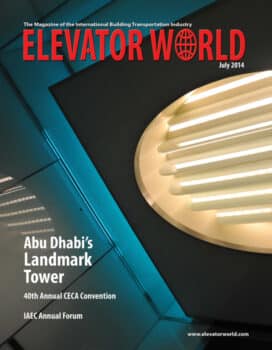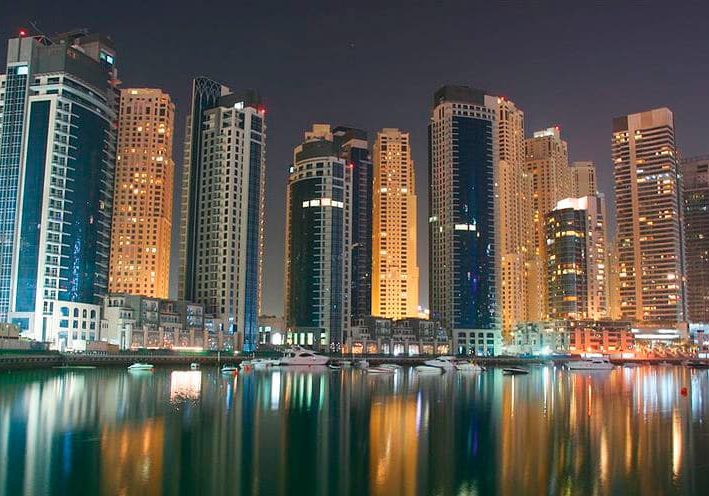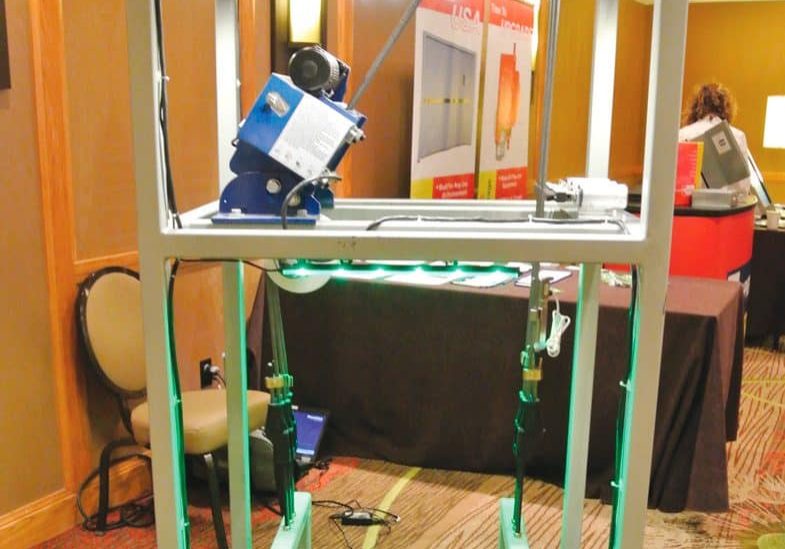ThyssenKrupp Elevator CEO Andreas Schierenbeck talks about how his career and personal choices are helping him rise to the challenge of an ever-more-complex “elevator world.”
There are parallels between running a marathon and completing a complex, time-consuming job for a client. Both present pitfalls and Pyrrhic victories, but, when completed successfully, provide a feeling of satisfaction like no other. Andreas Schierenbeck is familiar with both, having completed marathons such as the Swiss City Marathon in Lucerne, Switzerland, and the New York City Marathon, as well as such work assignments as one several years ago for his previous employer, German multinational engineering and electronics conglomerate Siemens AG. In that instance, he implemented and led a program to transform an old organization in South America into a paragon of energy efficiency, in turn helping it realize millions in additional revenue. Looking back, Schierenbeck describes the job as “a lot of fun,” which is exactly how he would talk about training for and running in a marathon.
“In any area of engineering – building, building technology, mechanical/electrical – you have to learn by doing. It is the same for elevators.”
Recently, your reporter took the opportunity to sit down and talk with Schierenbeck at the Walter E. Washington Convention Center in Washington, D.C., following his lecture on energy-efficient technologies, which was part of the 2014 Energy Efficiency Global Forum.
Approaching 50 years old, but with a youthful appearance thanks in part to his dedication to fitness, Schierenbeck was born in Hohen-Neuendorf, Germany, approximately 23 mi. northwest of Berlin, in 1966. He studied electrical engineering at Dresden University of Technology and began his career as a software developer for a control center. This was followed by positions in commissioning and as a business developer for Siemens in Vienna.
In this role, he spent two years in Colombia and Venezuela. Upon return to Vienna, he successfully oversaw restructuring of a software company Siemens had bought. In 2005, Siemens named him senior vice president of Building Technologies, then CEO for Building Automation in Zug, Switzerland, in 2010. He was named president and CEO of Siemens Corp.’s Building Technologies Americas in 2010. All the while, he had been on ThyssenKrupp Elevator’s radar, and, in June 2012, was appointed vice chairman of its executive board. He was named chairman of the executive board and CEO in January 2013.
A year and a half into his tenure as CEO, Schierenbeck feels he has built a strong foundation that will enable him to successfully lead the company – the largest employer in the U.S. elevator industry and a major employer worldwide – into the 21st century. He elaborates:
“In any area of engineering – building, building technology, mechanical/electrical – you have to learn by doing. It is the same for elevators. When I started my assignment at [ThyssenKrupp Elevator], I found that its business structure was comparable to [that of Siemens]. From a complexity point of view and from a customer-service point of view, the processes are quite comparable. And, of course, it is the same type of customer – building owners and managers.”
Among events Schierenbeck makes a point to attend are Interlift in Augsburg, Germany; Elevcon, which will be held this year in Paris; the Council on Tall Buildings and Urban Habitat International Conference, this year in Shanghai; and China’s World Elevator & Escalator Expo. Schierenbeck spends weeks traveling, otherwise working in Essen and living in Düsseldorf, Germany, with his wife and eight-year-old son. He has achieved his goal of a 50/50 travel/home schedule. And, although he concedes that there are few hours left for activities such as reading and working out during the work week, he believes, like many Europeans, that “vacations are not a hobby, but a part of life.” With that in mind, he and his family take several vacations each year, to beaches in the summer and ski resorts in Switzerland in the winter. The last books Schierenbeck read for fun were those of the “Song of Fire and Ice” fantasy series by George R.R. Martin, on which the popular television show “Game of Thrones” is based. “I’m ahead of the TV series now,” he said. “I can’t wait for the next book.”
After he completed his college studies, Schierenbeck spent nearly 20 years away from his native Germany, living from two to six years in locales such as Switzerland, Austria, Colombia, Venezuela, Sweden and Chicago. His is a multicultural household, Schierenbeck said, and his son speaks three languages. “I speak to him in German; my wife, who is Spanish, speaks to him in Spanish, and he does his homework in English,” he explains.
While he does not bring work home, Schierenbeck’s mind is always in problem-solving mode, he says. He is a gadget enthusiast who loves to figure out ways to integrate such systems as Internet and thermostat. “Integration is a big issue right now in business, and not only with elevators,” he observed.
“We have to think of other solutions, such as how to increase capacity through technology such as destination dispatch, rather than just being in the race for speed.”
Speaking of integration, ThyssenKrupp Elevator continues to grow its Leadership in Energy and Environmental Design (LEED®)-accredited staff, a number that recently surpassed 150. Schierenbeck notes:
“LEED, from my point of view, gives a good overview of how a building is constructed and how it operates. With LEED, you look at a building from all angles – how elevators and escalators fit into it, but also how the building is used, its surroundings, capacities, waiting times and number of people served. It paints a broader picture.”
LEED also lends appeal and prestige to a property, making it more marketable, Schierenbeck said, particularly in the U.S. “If you want to rent out an office building, it really should be LEED certified,” he said. “There is a lot of market value there.”
A major challenge facing the elevator industry, Schierenbeck said, is the quest to be fastest, at times at the expense of passenger comfort and health. “As a human being, how fast do you want to go before pressure differences make you uncomfortable?” he asks, referencing an instance approximately 10 years ago in which the 1,346-ft. express elevators in Chicago’s Sears (now Willis) Tower had to be slowed down after a visitor suffered a ruptured eardrum:
“At the moment, we’re trying to build higher, which requires speedier elevators. You’re talking about 18-22 mps. What we’re neglecting to realize is it’s not just about speed, but capacity. We have to think of other solutions, such as how to increase capacity through technology such as destination dispatch, rather than just being in the race for speed.”
That does not mean ThyssenKrupp Elevator dismisses the importance of speed, Schierenbeck said, but, it must go hand-in-hand with efficiency, comfort, sustainability and profitability. ThyssenKrupp Elevator’s TWIN system – two cabs running independently in the same shaft – in the Shanghai World Financial Center is a prime example. The units reach speeds of up to 10 mps, while taking passengers through the 492-m-tall building, making them the fastest of their type in the world. The reduction of floor space occupied by elevators in such buildings is essential, he adds.
Schierenbeck said he is excited about continuing to oversee ThyssenKrupp Elevator as it grows, including the construction of test towers in Germany, Spain and elsewhere, along with iconic high-rise projects in the U.S., Asia, Europe and the Middle East. He stated:
“We have, and will continue to have, many projects that we are proud to be part of. Every time you are working on a project, there are delays, problems arise, and you go back and forth with the customer. But, in the end, it’s something you can be proud of. Elevators are a people business – people are producing the elevators, providing the service and doing the installations. And, I think it’s good to be involved in a people business.”
Get more of Elevator World. Sign up for our free e-newsletter.










